
How To Care For Roses: Gardening Tips On Growing Rose Bushes
Published: 27/03/2023 | Updated: 13/06/2023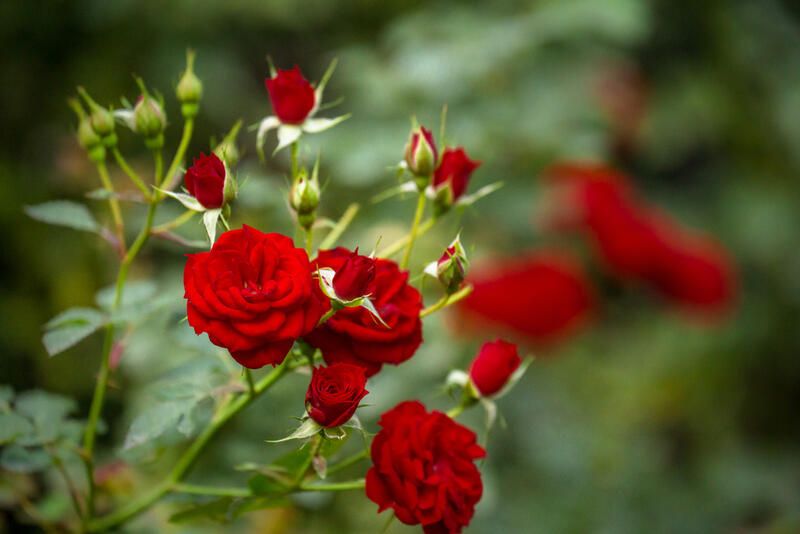
Roses are a symbol of love and beauty. They're some of the most popular flowering plants that have been around for ages.


What's most astonishing about rose varieties is that there are so many of them! From your typical red roses with prickly thorns to pink or even white roses, the wide variety of colors that rose bushes provide can fill any garden with life.
Roses are some of the best flowers to plant in your garden, hands down, and with proper care, they can last for years.
If you're new to growing roses or just looking to expand your knowledge, this guide will help you learn about all the different types of roses and how best to care for them.
Old Roses
Roses have been around for centuries and the ones that existed before the eighteen hundreds aren't exactly the ones we're growing today in our gardens. Those roses are what we call old-fashioned roses, or old garden rose bushes.
Old roses are more fragrant than modern ones. They have a stronger and more complex scent, which is why you'll find them in so many perfumes, colognes, and even candles.
They're also hardier than their modern counterparts--they can deal with harsher weather conditions like extreme cold or heat without dying out as quickly as modern roses do.
Old roses are disease resistant and don't need to be sprayed with pesticides or chemicals as their modern counterparts do. This makes them great for people who want to avoid using harsh chemicals around children or pets!
In addition, many varieties of old garden roses are thornless, which means they're generally safer to keep around kids or pets.
Another great quality that old-fashioned blooms have is their ability to last longer than newer varieties. Since they're less likely to fall off before they're fully open, they give us plenty of time to enjoy their beautiful colors!
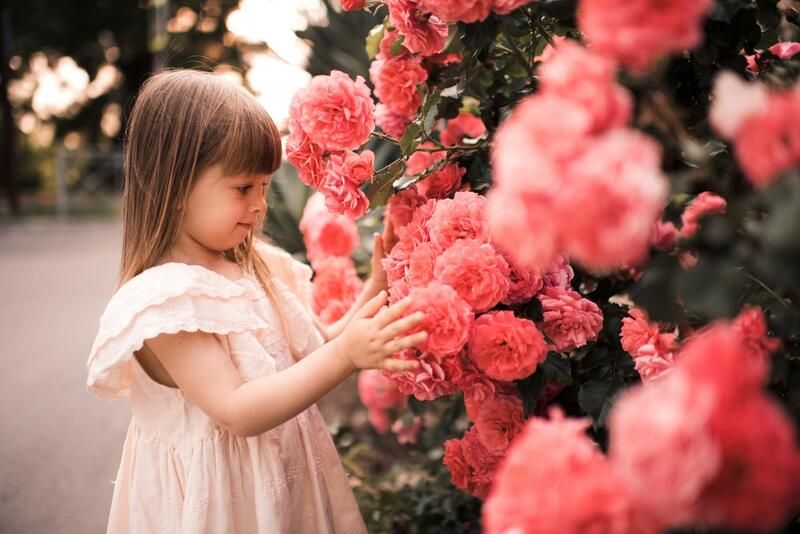
Wild Varieties
The second category that roses fall into is the wild roses category. Wild roses are native to the United States and grow in many types of soil. They are drought-tolerant and make a great border plant for your yard or garden.
They have beautiful blooms and strong thorns, so you must choose the right plant for your needs before planting one in your yard!
There are many different varieties of wild roses, and they can be found in most states. The best time to plant these roses is during the autumn months when temperatures are cool, but not freezing.
If you live in a warmer climate, you may want to wait until early spring before planting your flowers.
Hybrid Tea Roses
Hybrid tea roses are a cross between a hybrid perpetual and a tea rose, and they're the 3rd and last category that rose varieties fall into.
They're the most popular type of rose in the United States, and they're also one of the most common types of flowers you can buy at your local grocery store or florist.
Hybrid teas make great cut flowers because they last for up to six weeks when properly cared for.
They can be grown in containers as well as in gardens, though it's important to keep them watered during dry spells (which are especially common during summer months).
Common Varieties
There are many different types of roses. Some have strong scents and vibrant colors, while others can be used around your kitchen, so it's important to know which one you want before you buy it.
Here are some common varieties:
-
Floribunda Roses: These grow about 3-4 feet tall with a bushy shape; they're excellent for cutting flowers because they have many blooms at once! They need more water than hybrid teas do (1/2 inch every 2 weeks), but less than classic types like gallica or rugosas since they don't have as much foliage above ground level.
-
Miniature Roses: These come in many colors and sizes--some even reach only 6 inches tall! They make great patio plants because they're small enough not to block out light from other plants nearby, while still providing plenty of color to your garden.
-
Grandiflora Hybrids: These produce large clusters containing multiple flowers per stem rather than single blooms like most other kinds do; this makes them ideal candidates for bouquets.
-
Shrub/Climber Hybrids: These tend toward being woody shrubs rather than vines due to their upright growth habit (though some may climb if given enough support), making them ideal choices for hedges along fences.
In the next section, we'll talk more about each of these common varieties and other popular ones, then discuss their care conditions!
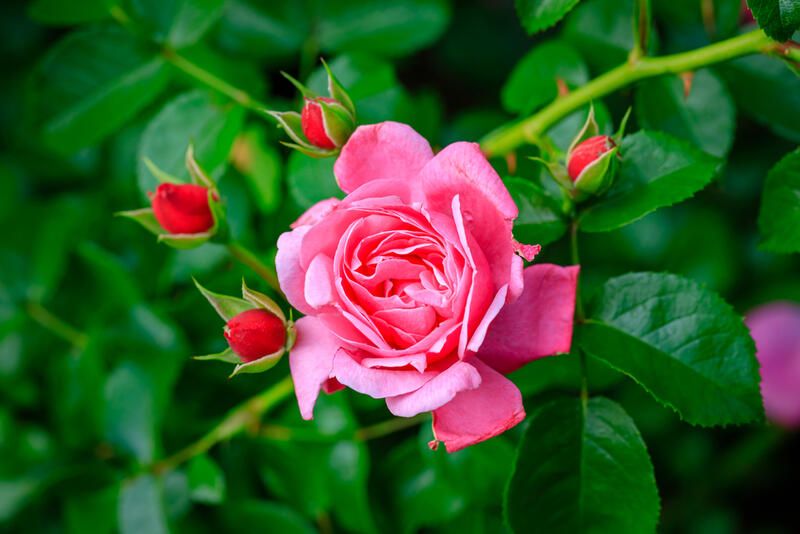
Floribundas
Floribundas are a hybrid of the hybrid tea and Grandiflora roses.
They are larger flowers than hybrid teas, with an open shape that allows the petals to show off their color. The blooms tend to be more rounded than those of other types of roses, and their stems are often slightly longer too.
Floribundas bloom in clusters rather than individually--which gives them an even more dramatic look when you're arranging them in your vase or bouquet!
Floribundas are the perfect choice if you're looking for a larger, dramatic rose. They have a lot of different colors and sizes to choose from, so you can find one that fits your taste perfectly.
Climbing Roses
Climbing roses are a popular choice for gardeners. They can grow up to 20 feet tall but are often pruned to keep them shorter.
Climbing roses are available in many different colors and varieties, including pink and white blooms, as well as fragrant varieties that smell like peaches or vanilla.
The majority of climbing roses have strong stems that will support themselves against a trellis or fence without any additional support needed from you!
If you want your climbing rose to grow up a wall instead of along the ground, then you should consider attaching it directly to your house with some screws (and maybe some brackets).
Groundcover Roses
Groundcover roses are low-growing shrubs that are often used in borders and along walkways. They need to be planted in the spring or fall, as they can't tolerate cold weather well.
Groundcover roses are also often grown in containers and make excellent patio plants.
Shrub Roses
Shrub roses are compact plants with a low, spreading growth habit. They're ideal for hedges and screens, as well as mass plantings and container gardening.
The shrub rose typically has multiple stems that grow from the ground and can reach up to six feet tall.
The leaves are dark green with serrated edges, making them easy to distinguish from other plants like evergreen shrubs or vines.
These flowers have five petals each (they look like little roses), varying in color from white through pinkish red up to deep purple; some even have spots on them!
The best way to care for your new shrub rose is by watering it regularly until it gets established in its new home.
After that point, you should only need to water whenever things get dry outside so that they don't get stressed out by overhydration (which can cause diseases).
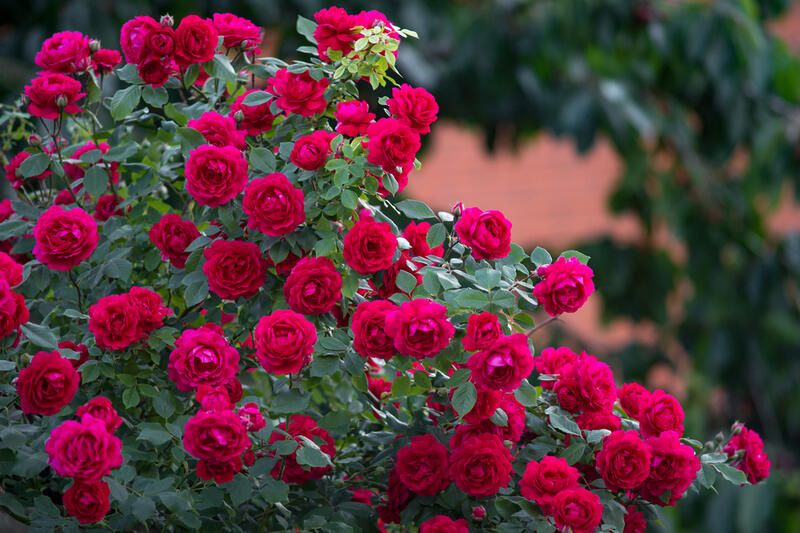
Miniature Roses
Miniature roses are perfect for small spaces and containers. They grow to be about 3 feet tall, so they're much smaller than most other varieties of roses.
Miniature roses bloom profusely, with blossoms that last longer than those of other types of flowers.
They are great for gardeners who want to add color to their yards without taking up too much space or spending too much time caring for their plants.
Potted Roses
If you're looking to grow potted roses, then you'll want to know how to care for them. The first thing you should do is plant your potted rose in a container that has good drainage.
You can use either a wooden box or plastic pots, as long as they have holes in the bottom of them so that water can drain out easily.
When planting a new potted rose, make sure that you bury at least half of its roots underground so they don't dry out during watering sessions.
If possible, use soil that has been enriched with compost or manure before planting--this will help keep pests away from your plant while also giving it the nutrients it needs to thrive!
You should also prune roses every few weeks during summer months (when temperatures rise above 80 F). This will encourage new growth which means more flowers later down the road!
Heirloom Roses
Heirloom roses are the original roses. They've been around for centuries, and they're not genetically modified or hybridized.
There are many varieties of heirloom roses, including 'Honorine de Brabant' and 'Viridiflora.'
Heirloom roses can be grown in a variety of climates and conditions.
They tend to grow well in temperate regions, but may also thrive in warmer countries if they receive enough water during the summer months (June through September).
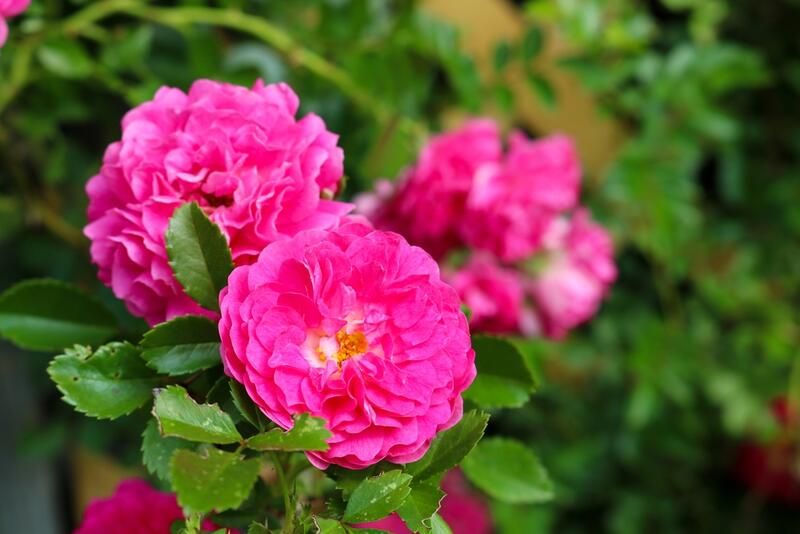
Grandifloras
The Grandiflora rose, a member of the Hybrid Tea family, is one of the most popular varieties.
It's known for its large flowers and has been around since 1867 when it was first introduced by Jules Gravereaux in France.
Grandifloras are known for their large, single roses that can grow up to 8 inches in diameter. They have a beautiful fragrance and are often used in arrangements or as cut flowers.
Their color varies from pale pink to deep red, with some varieties having a strong yellow undertone.
They're also known for their hardiness and can withstand colder temperatures than other varieties of roses.
They're also popular as cut flowers because they don’t wilt as quickly as other varieties.
Rugosas
Rugosas are hardy roses that grow well in the cold. These are one of the most popular rose varieties, and they make a great choice for a first-time rose grower.
Rugosas can also be grown in containers, making them ideal for apartment or condo dwellers who want to grow their flowers.
Planting Roses
The first step in planting roses is to choose the right location. Roses should be planted in full sun and sheltered from winds.
If you are planting a bare-root rose, dig a hole that's wide enough for the roots and deep enough so there will be 4-6 inches of soil above them once they're covered with mulch or soil mix.
Fill it with water until the water comes out of the bottom of your hole (this will help loosen any compacted soil).
Place your bare root rose into this prepared space and backfill it with soil, firming it as needed so that there aren't any air pockets around its base.
Lastly, water again lightly so as not to disturb its roots further than necessary before covering everything with mulch or garden soil mix.
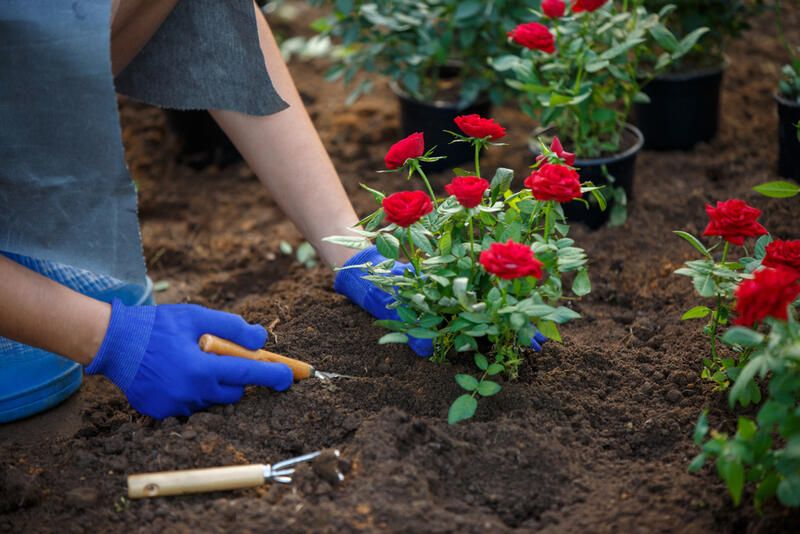
Propagating Roses
Roses are one of the easiest plants to propagate, which means you can grow more roses without having to buy new ones.
There are several ways to propagate roses:
-
Budding: Take a stem from the parent plant and remove all leaves except for one on each side. Place this bud in water until it grows roots, then plant it in soil.
-
Grafting: Taking two different types of rose plants (eg. A climbing variety and a bush variety) and joining them together so that they grow as one plant; this is often done using an existing rootstock so that the new plant will be more resistant to disease than either parent.
-
Layering: This is when you take a stem from the parent plant and bury one end in soil, then leave it for a few weeks. When you dig up the stem it should have roots growing out of it; plant this in soil and water until new growth begins.
-
Cutting: Cutting is when you take a piece of the parent plant and put it in water; after a few weeks, it should have roots growing out of it. Plant this new cutting in soil and water until new growth begins.
Growth Conditions for Roses
When it comes to the conditions that roses need to grow, there are a few things you should know.
-
Full sun - Roses grow best in full sun, which means they need at least six hours of direct sunlight each day. If you live in a hot climate and cannot get your rose plant outside during the day, consider moving it closer to an open window or porch where it can still receive plenty of light but remain cool enough for the plant's health.
-
Partial shade - Roses also thrive when they receive partial shade from either trees or buildings; this protects them from strong winds and heat while still allowing them access to some sunlight throughout most days of summertime weather (depending on where you live).
Water Requirement for Bare Root Roses
There are a few things to keep in mind about watering roses.
First, water them daily. Second, water them early in the morning so they have all day to dry out before nightfall.
Thirdly, make sure that you are using the right type of irrigation system for your roses: either a soaker hose or drip irrigation system works well because it allows water to penetrate deeply into the soil.
Fourthly, make sure not to overwater!
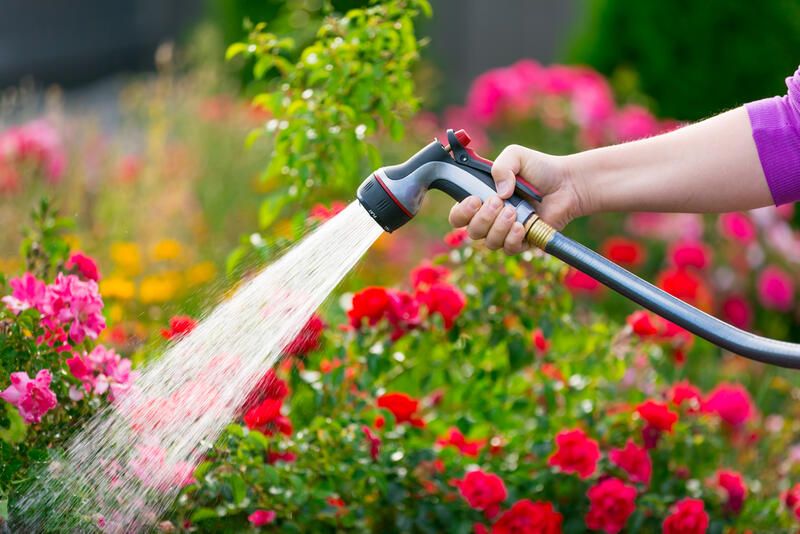
Fertilizing Rose Varieties
Fertilizers are an important part of rose care. Organic fertilizers, such as compost and manure, provide nutrients to the soil and plants.
They also help to reduce soil compaction by adding organic matter to it. You can use these fertilizers in addition to or instead of chemical ones if you're looking for natural fertilizers:
-
Compost is made from decomposed leaves, grass clippings, and other plant waste that has been mixed with water until it becomes dark brown or black (it should not be hot enough for steam).
-
Manure contains nitrogen which helps plants grow faster than they would otherwise; however, too much nitrogen can cause leaf burn so only apply this product once every two weeks during springtime.
How to Grow Roses in Winter
Roses are beautiful and fragrant, but they can be tricky to grow in winter. They need a lot of care and attention, especially during the winter months.
If you want to have roses in your garden year-round without having to worry about them dying out during the cold weather, here are some tips on how to care for them:
-
Roses can be planted anytime between October and March (when temperatures are above freezing).
-
Choose a sunny area that has good drainage and soil that drains well so it doesn't get too soggy when it rains or snows outside.
-
Dig up holes that are deep enough so that only about one-third of each stem remains underground after planting; this allows air to flow around them which helps prevent fungal diseases from forming on their roots.
Pruning Roses
Pruning is the process of removing parts of a plant, and it's important to keep your roses healthy and attractive.
Pruning should be done in the spring, summer, or fall--never during winter months when plants are dormant.
When you're ready to prune your rose plants:
-
Use sharp tools that are clean and disinfected before each cut. This will prevent disease transmission between plants (and humans).
-
Avoid making cuts at an angle; keep them straight across so they heal quickly without forming calluses that could become infected later on down the road.
-
Don't overdo it! You want to shape your plant into an attractive shape without removing too much wood from its structure.
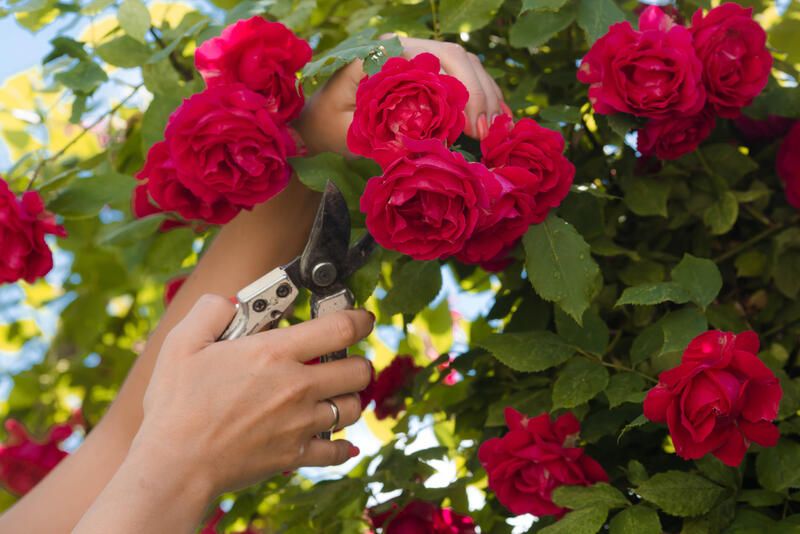
Pests & Diseases to Look out for
Pests and diseases are common problems for roses. The following is a list of the most common pests and diseases to look out for:
Roses are susceptible to a large number of fungal diseases, which can cause leaves to discolor or drop off the plant entirely.
Roses also have many insect enemies like aphids, mealybugs, scale insects, and spider mites that feed on their leaves or sap.
When stressed by drought or lack of nutrients these creatures may multiply quickly causing severe damage before you even notice them.
Diseases include black spots (caused by fungi), powdery mildew (also caused by fungi), and botrytis blight (which resembles gray mold).
Insects include Japanese beetles--they're hardy enough that they can survive winters in cold climates but not as much so in warm ones--and aphids.
Common Uses for Roses
Roses have been used for centuries as food, medicine, perfume, and decoration. They have also been recognized for their beauty and symbolism.
The ancient Egyptians used roses as incense in religious ceremonies and embalming. They were also used for medicine and decoration.
Roses were also a symbol of beauty and love for the Greeks and Romans. For that reason, they were used as decorations in their festivals and celebrations.
How to Incorporate Roses in Your Landscape Design
You can use roses in your landscape design to add color, create a rose garden and even plant them in containers.
You can plant roses around the perimeter of your home, along the driveway, or near an entryway where they will be visible from the street.
You can also use roses as accents around other plants such as hydrangeas or annuals that will bloom at different times throughout the year.
Plant Roses & Enjoy Their Beauty in Your Garden!
We hope that this article has helped you to understand the different types of roses and their uses.
If you are looking for a way to incorporate these beautiful flowers into your landscape design, then we have some great tips for doing so! Don't hesitate to ask us!
We'd love to help you find a variety that will thrive in your climate zone and provide plenty of blooms throughout the growing season.
Fill out the contact form at shrubhub.com and get a free consultation from our plant experts! You can even request a full garden renovation plan at 30% of the price of local contractors!


